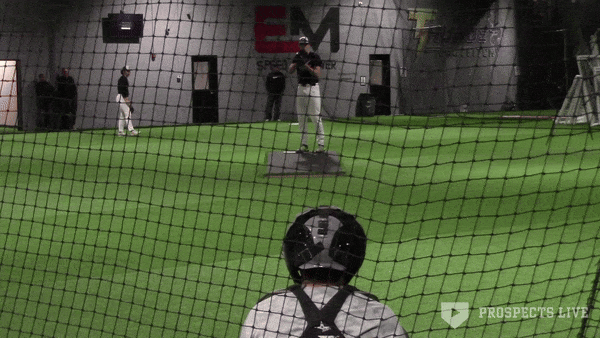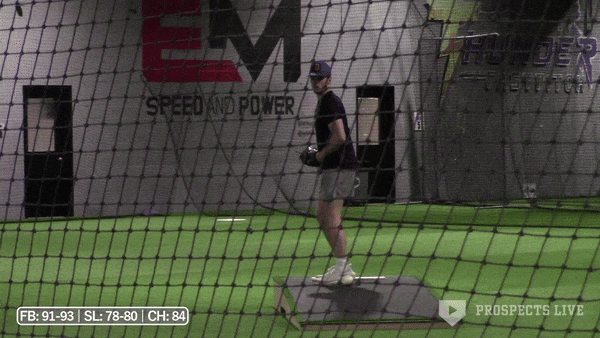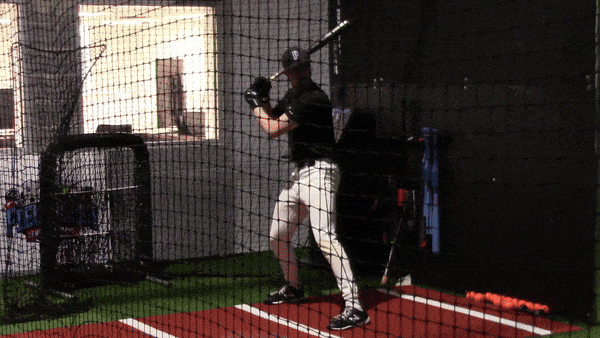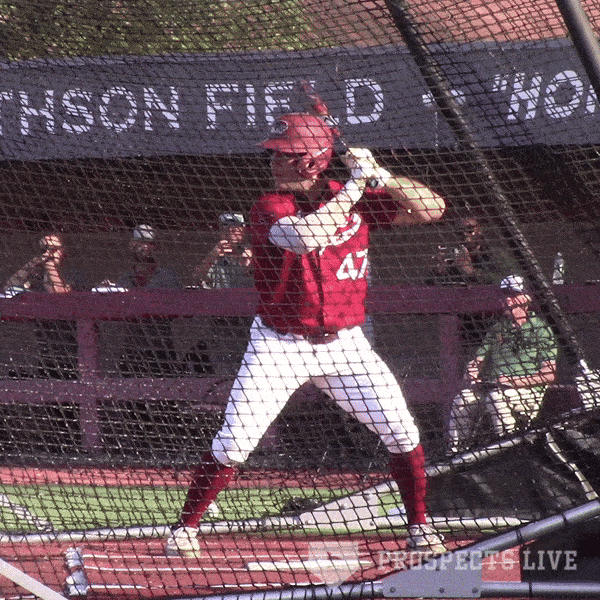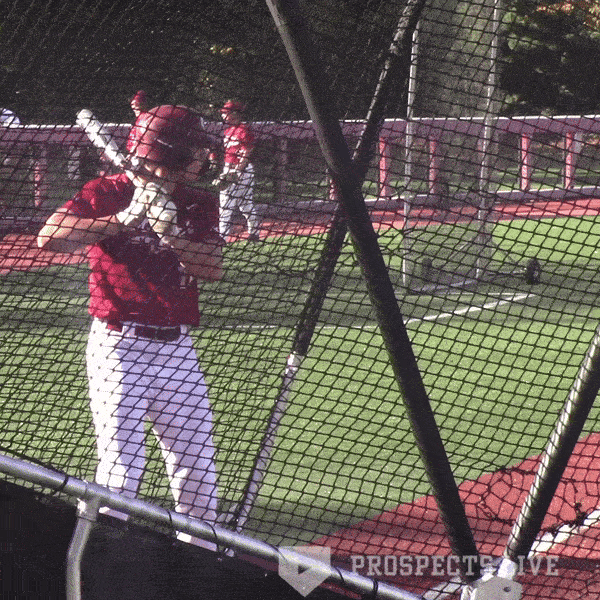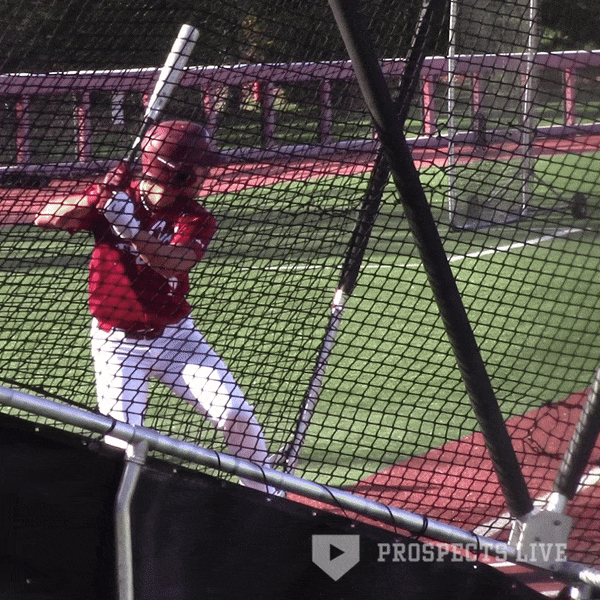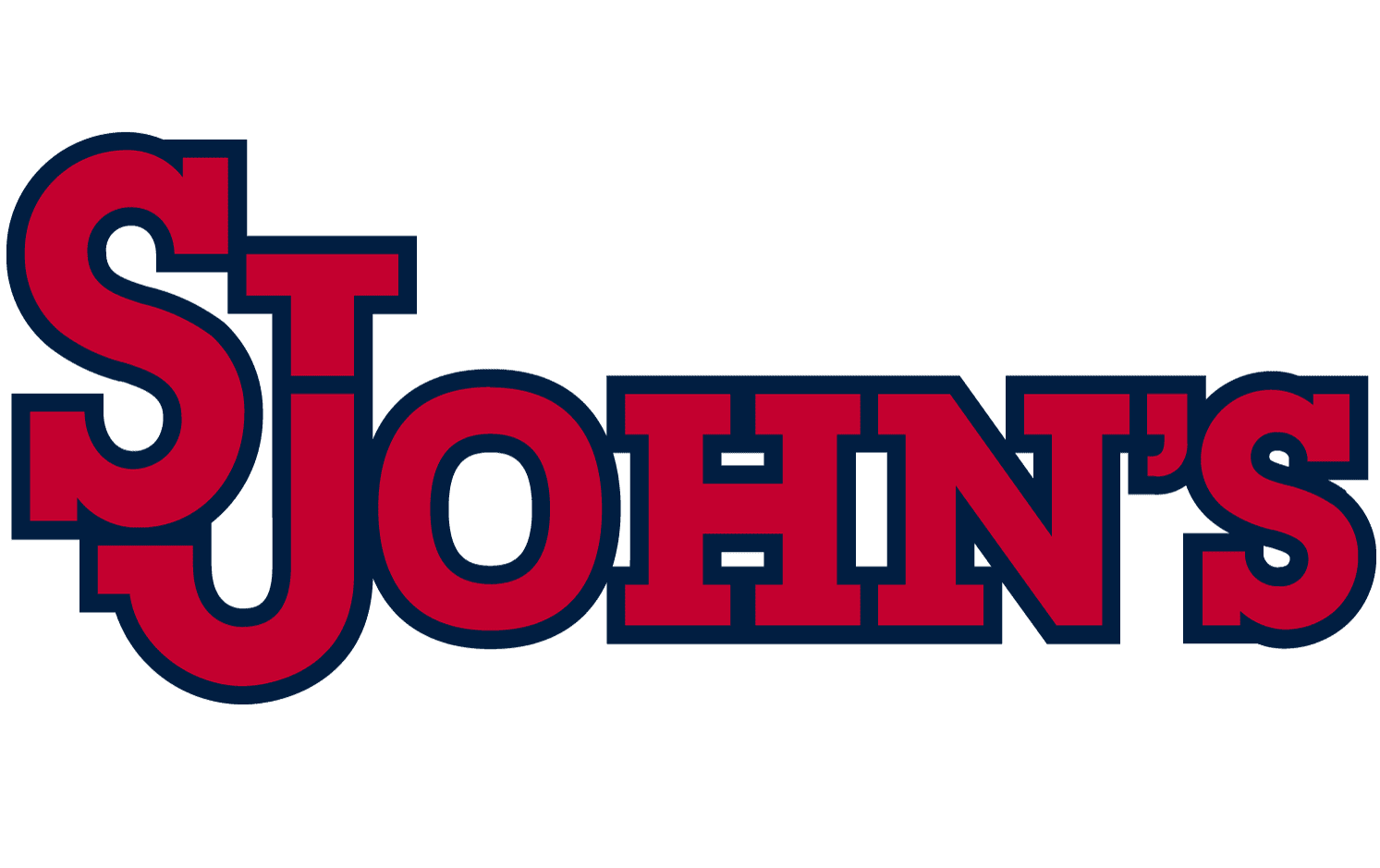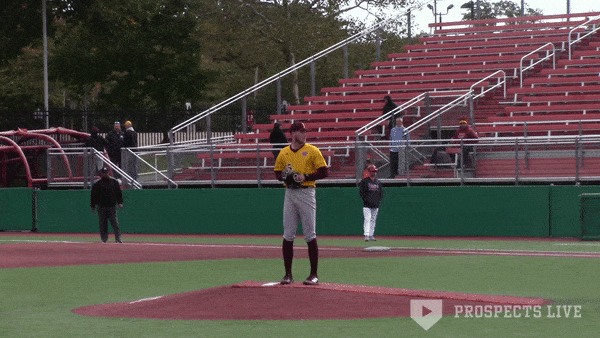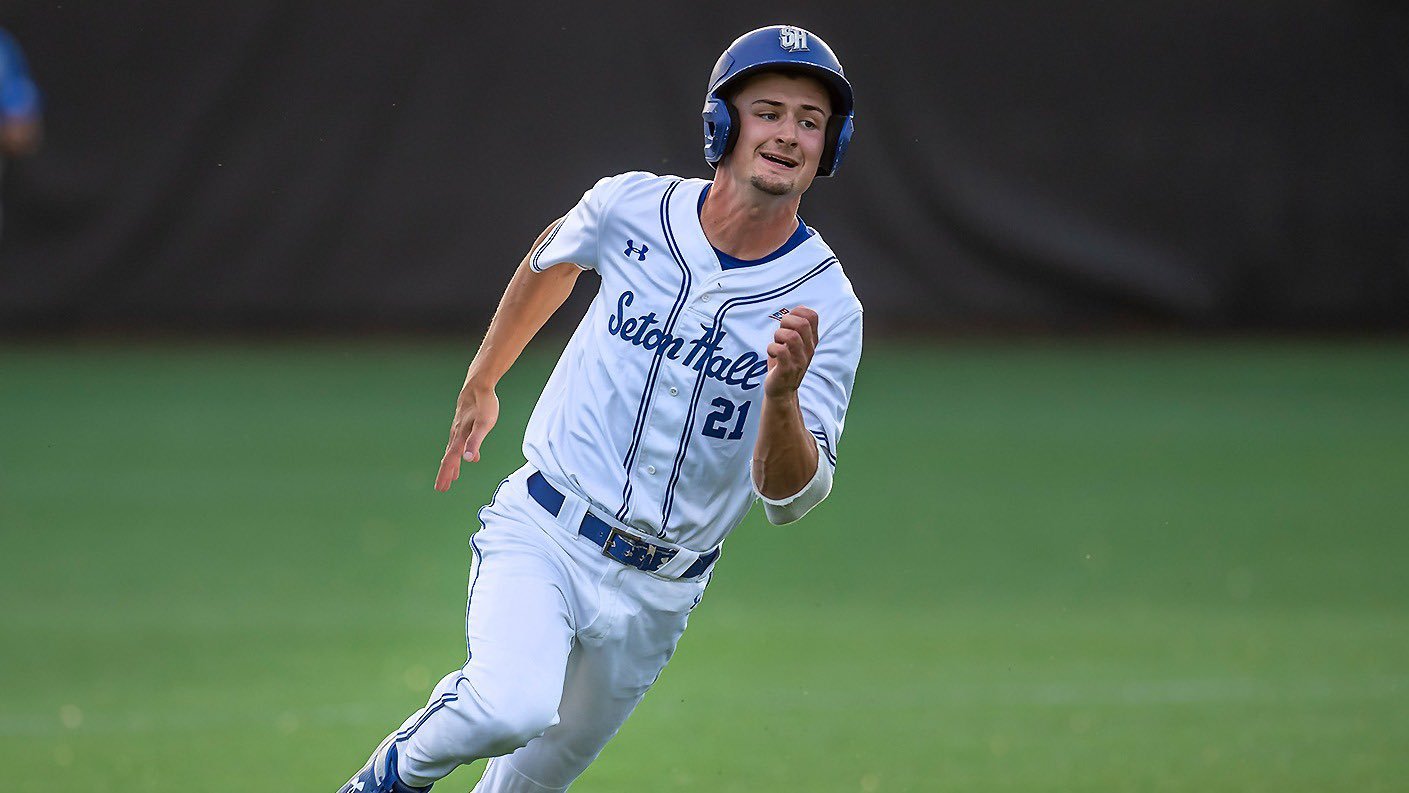Ladies and gentlemen, it’s that time of year again.
The summer circuit is alive and well, and as the 2023 draft cycle is entering its final weeks, we’ve begun to turn our attention to next year’s class. One of the more pivotal events of the summer is USA Baseball’s Collegiate National Team, which is set to kick off on June 25th with a four-game training camp series to determine the final 26-man roster for international series’ against Chinese Taipei and Japan.
Before we dive into the full 58-man roster for training camp, let’s break down some key notes. Wake Forest leads the way with four players invited to camp, followed by TCU, Stanford, and Florida with three apiece. Schools like North Carolina A&T and Alabama State will have their first invitees in program history, a momentous occasion for those schools. Like last year, there will be some draft-eligible prospects involved, though it’s a smaller number this year, as Xavier Meachem and Nicholas Wilson are the lone 2023 prospects to be invited. There are a handful of 2025 prospects included, as well. Last, but certainly not least, Cal Poly head coach Larry Lee will manage the team this summer, succeeding Ole Miss skipper Mike Bianco.
LHP Ben abeldt, texas Christian (2025)
2023 Pitching Line: 32 Games (1 Start), 55 IP, 3.60 ERA, 24:71 BB:K ratio, 2 Saves
Summary: A true freshman that has become one of TCU’s most used bullpen pieces, Abeldt brings serious funk to the mound. He’s added velocity since getting to campus, now sitting in the low-90s consistently with more of a two-seam shape, but he creates a seriously tough angle thanks to the amount of crossfire in his delivery. It’s similar to what Chris Sale is able to do, if not more severe. The slider is his primary off-speed offering, a tight spinning breaking ball with some two-plane break, but it plays up thanks to his angle. He’ll need to add a third weapon, but this is an arm to watch in the 2025 class as a potential starter.
RHP Matt Ager, UC Santa Barbara (2024)
2023 Pitching Line: 15 Games (All Starts), 92.1 IP, 3.12 ERA, 26:115 K:BB ratio
Summary: A freshman All-American in 2022, Ager transitioned into a starting role with UCSB and was one of their top arms in 2023. He’s got a long, projectable frame with an easy and loose delivery on the bump. He can run the fastball up into the mid-90s, but will generally sit in the low-90s with solid extension and some life through the zone. His best pitch is his slider, a low-80s offering with big sweeping movement and some depth, profiling as his primary strikeout pitch. He’ll toy with a curveball and change-up, but they’re sparsely utilized.
RHP Eldridge Armstrong III, Transfer portal (2024)
2023 Pitching Line: 30 Games (0 Starts), 41.2 IP, 3.24 ERA, 15:46 BB:K ratio, 1 Save
Summary: Formerly an infield prospect, Armstrong has transitioned fully to the mound and has seen plenty of usage in San Diego State’s bullpen. A low-90s fastball leads his arsenal with solid carry and a flat approach angle, though his best pitch is his slider. It sits in the 81-85 MPH range with tight spin and gyro movement, sometimes acting like a cutter. With that said, he could use some refinement with the pitch. He’ll mix in a curveball and a change-up, but not very often. Armstrong has entered the transfer portal as of June 14th.
RHP Drew Beam, Tennessee (2024)
2023 Pitching Line: 17 Games (All Starts), 84.1 IP, 3.63 ERA, 23:88 BB:K ratio
Summary: One half of Tennessee’s highly touted pair of arms in next year’s class, Beam is a sturdy workhorse on the bump who has seen an uptick in stuff in 2023. What was more of a low-90s arm in 2022 has bumped up into the mid-90s in 2023, touching 98 MPH, with a mix of carry and run up in the zone and sink at the knees. His curveball has 10-4 shape and can get slurvy, but it’s thrown hard in the low-80s with big sweep and depth. He’ll mix in a cutter-esque slider in the mid-80s and a hard, firm change-up in the high-80s, as well. Having taken the Sunday role the last two years in Knoxville, Beam likely moves higher up in the rotation ranks next spring.
C Karson Bowen, Texas Christian (2025)
2023 Slash Line: .350/.420/.502, .922 OPS, 6 HR, 46 RBI, 9 SB, 25:49 BB:K ratio
Summary: A highly touted prepster in 2022, Bowen made it to TCU and provided an immediate impact. A bulkier catcher, Bowen does a great job of generating contact and spraying the ball to all fields. There’s not a ton of power presently, though as he matures physically, that’ll likely change. He’s got a solid eye at the dish, though he has shown struggles with swing-and-miss against off-speed pitches. He’s got solid actions behind the dish with a strong arm and he’ll be given every chance to stay back there moving forward.
RHP Brody Brecht, Iowa (2024)
2023 Pitching Line: 17 Games (16 Starts), 77 IP, 3.74 ERA, 61:109 BB:K ratio
Summary: The 2024 class has plenty of potentially high-end arms and Brecht might just have the most upside of them all. This was his first year in the weekend rotation, posting solid numbers and putting together a few noteworthy outings. The fastball has steep downhill plane in the upper-90s, breaking the triple-digit barrier on numerous occasions, with bat-missing traits, but his slider might be the best pitch in college baseball. Thrown in the upper-80s, Brecht’s slider is a legitimate plus-plus offering, showcasing serious two-plane tilt and a whiff rate over 50% in 2023. He’ll mix in a hard change-up, though it’s a work in progress. His mechanics are rather effortless, though his command and strike-throwing need improvements.
RHP Aiven Cabral, Northeastern (2025)
2023 Pitching Line: 19 Games (16 Starts), 83.2 IP, 2.58 ERA, 14:69 BB:K ratio
Summary: A Freshman All-American, Cabral was one of the best pitchers in the Colonial Athletic Association in 2023. There’s some funk to his delivery with a deep arm stroke behind his back leg, creating some deception for hitters. He doesn't throw hard, usually sitting in the high-80s and topping out at 92 MPH, with running life, though he doesn’t miss a ton of bats with it. His primary secondary is a slider in the high-70s with two-plane break and solid bite that has a whiff rate over 40%. He’ll mix in a mid-80s change-up with sink that will blend in with the fastball at times.
LHP/1B Jac Caglianone, Florida (2024)
2023 Slash Line: .325/.391/.735, 1.126 OPS, 31 HR, 84 RBI, 4 SB, 17:53 BB:K ratio
2023 Pitching Line: 17 Games (All Starts), 73.1 IP, 3.68 ERA, 52:85 BB:K
Summary: A two-way star who took the country by storm in 2023, Caglianone is the collegiate version of Shohei Ohtani. A physical presence on the field, Caglianone has thunderous power at the plate with explosively quick hands and bat speed. It plays to all fields and when he gets a hold of one, you know it. He can get aggressive and run into strikeout issues, though he generates a good amount of contact. When he’s not pitching, he’s manning first base. On the bump, he’s been up to 99 MPH from the left side, routinely sitting in the mid-90s with carry and run. The change-up has plenty of velocity separation from the fastball and dives away from righties in the low-80s, and he’ll flash a cutter-esque slider in the high-80s. He’ll need to refine his command, but he’s pretty raw in that aspect presently.
LHP Kayden Campbell, Louisville (2025)
2023 Pitching Line: 23 Games (0 Starts), 19.1 IP, 5.12 ERA, 8:25 BB:K ratio, 2 Saves
Summary: Another 2025 eligible arm, Campbell is a unique reliever. There’s serious funk to his delivery, starting with an arm swing and low release that provides deception and allows the fastball to jump on hitters quickly. He’ll primarily sit in the 88-92 MPH range with sink and run, though he’ll throw in a four-seamer with some utility up in the zone at 92-94 MPH. His slider provides plenty of sweep in the high-70s/low-80s with solid spin rates, though it can blend in with a slower curveball. He’ll also throw in a change-up with run.
OF Cam Cannarella, Clemson (2025)
2023 Slash Line: .388/.462/.560, 1.022 OPS, 7 HR, 47 RBI, 24 SB, 33:39 BB:K ratio
Summary: The ACC Freshman of the Year, Cannarella was originally a shortstop prospect, though he has taken over the centerfield position and become one of the best in the country. He’s got a quick bat and smooth swing from the left side, abusing the opposite field with solid pop, though he’s shown an ability to turn on pitches to pull-side with excellent results and power. He’s got a great eye at the plate and will limit the strikeouts while taking his walks. He’s got excellent speed and range at the eight, not to forget that his defense is very good. He looks like he’ll be the next top ACC centerfielder after Vance Honeycutt gets drafted.
RHP Evan Chrest, Jacksonville (2025)
2023 Pitching Line: 15 Games (All Starts), 90.2 IP, 2.68 ERA, 36:98 BB:K ratio
Summary: The ASUN Freshman of the Year, Chrest was a late riser in the prep ranks last spring, but ultimately took over the Friday night role out of the gate for Jacksonville. He’s on the smaller side of the spectrum, but it’s a legit three-pitch mix. The fastball has a solid mix of ride and run, routinely sitting in the low-90s and there’s enough projectability remaining to see him get into the mid-90s. The slider has extremely high spin and two-plane break in the 80-85 MPH range, profiling as his best offering. His change-up is a runner in the low-80s and projects rather well, already showcasing a hefty whiff rate and gets quite a bit of usage late in outings.
1B/OF Charlie Condon, Georgia (2024)
2023 Slash Line: .386/.484/.800, 1.284 OPS, 25 HR, 67 RBI, 0 SB, 33:45 BB:K ratio
Summary: After redshirting his first year on campus, Condon had a breakout spring, taking home SEC Freshman of the Year honors and setting the new SEC freshman home run record. He’s got a lankier frame with a good bit of physicality present, coming in at 6’6”, 211 pounds. There’s a ton of easy power in his profile, grading out as plus at the next level with a couple of exit velocities topping 110 MPH. The hit tool itself is promising, limiting swing-and-miss and primarily spraying the gaps with great feel for the barrel. Defensively, he’s split time between first base and the outfield, playing solid defense at both positions with a good arm. He’s the third-ever Bulldog position player to receive an invite and the first since Kyle Farmer in 2012.
RHP Christian Coppola, Rutgers (2025)
2023 Pitching Line: 13 Games (All Starts), 66 IP, 3.68 ERA, 27:71 BB:K ratio
Summary: A true freshman, Coppola pitched his way into Rutgers’ Friday night role after starting the year as the Saturday starter. He doesn’t throw hard just yet, primarily sitting in the high-80s/low-90s with plenty of armside run. His breaking ball is his best pitch, a high-70s pitch with a high whiff rate that he can manipulate the shape of. He’ll throw more of a true slider with two-plane shape closer to 80 MPH, whereas the slower breaking ball looks more like a curveball with tons of depth. He’ll throw in a hard change-up that’s a work in progress. Expect Coppola to be one of the best arms in the Big Ten for at least the next two years.
C Jacob Cozart, NC State (2024)
2023 Slash Line: .301/.392/.546, .938 OPS, 10 HR, 42 RBI, 0 SB, 24:38 BB:K ratio
Summary: Cozart’s rough freshman campaign ended on a bright spot in May, translating into a breakout campaign in 2023 for the sophomore backstop. There’s been added loft to his swing and the contact has drastically improved from the left side, including better plate discipline. His power mainly plays to the pull side, though he can utilize the opposite field gap. Behind the plate, he’s got an excellent arm with solid defense, plus he’s one of the best framers in the country. He’ll need to shore up his chase rate, but overall, it’s a solid package of tools.
INF Kaelen Culpepper, Kansas State (2024)
2023 Slash Line: .325/.423/.576, .999 OPS, 10 HR, 41 RBI, 9 SB, 16:27 BB:K ratio
Summary: Despite missing a month of the season due to a hand injury, Culpepper was a catalyst in Kansas State’s lineup when he returned. He’s got solid plate discipline, limiting the strikeouts, though he’s in no rush to rack up the walks just yet. He’s got solid pull-side juice in his bat and does not get phased by fastballs, though he can be vulnerable to breaking balls away from him. He plays a solid third base presently, showcasing solid range and a strong arm, though there’s a chance that he could move off the position. If he stays healthy and irons out some warts in 2024, he has a chance to be a Day 1 pick.
LHP Alton Davis II, Alabama (2025)
2023 Pitching Line: 25 Games (0 Starts), 33.2 IP, 5.35 ERA, 12:32 BB:K ratio
Summary: Davis is the true definition of a string bean figure. At 6’5”, 185 pounds, he’s as wiry as they come, but don’t let the frame fool you, he’s benefitted greatly from a collegiate weight room. Davis sits comfortably in the 92-95 MPH range, touching upwards of 97-98 MPH, with downhill plane and some life through the zone. He has two distinct breaking balls, a mid-80s slider that has plenty of sweeping action and a two-plane curveball in the high-70s, both of which have solid spin numbers. He was just a pure relief arm in 2023, but Davis has the makings of being a weekend starter for Alabama.
LHP Cade Fisher, Florida (2025)
2023 Pitching Line: 25 Games (2 Starts), 44.2 IP, 3.22 ERA, 12:42 BB:K ratio, 2 Saves
Summary: Don’t look now, but looks like Florida was able to clone Hunter Barco. Fisher has been impressive in his first year on campus, nailing down a key role in the bullpen and accumulating a couple of starts. He primarily sits in the low-90s with a ton of running life, mainly due to the nature of his low release that hovers around the five-foot mark. The slider profiles as his best pitch, a low-80s sweeper from a tough angle that he can backfoot to righties and locate away from lefties for chases. He’ll throw a change-up that mimics the fastball shape with plenty of running life, as well. He’s looking to be one of the better 2025 eligible arms down the line.
LHP Dominic Fritton, NC State (2024)
2023 Pitching Line: 17 Games (9 Starts), 62.2 IP, 3.59 ERA, 24:75 BB:K ratio, 3 Saves
Summary: A draft-eligible sophomore, Fritton burst onto the scene as the Wolfpack’s Sunday starter before being moved into an Evan Justice-esque role in late April. It’s a three-pitch mix for Fritton, though it’s a fastball-heavy attack, and for good reason. It’s a low launch heater with a flat approach angle and great riding life in the zone that plays up from the low-90s velocity he sits at. There’s a mid-70s curveball and a low-to-mid-80s change-up, though he lacks feel for both and doesn’t throw a ton of strikes with either.
LHP Devin Futrell, Vanderbilt (2024)
2023 Pitching Line: 16 Games (15 Starts), 83.2 IP, 3.44 ERA, 20:72 BB:K ratio
Summary: Futrell has evolved into one of Vanderbilt’s better arms, moving into the weekend rotation and becoming a bit of a workhorse. He’s the classic projectable lefty with a loose arm, slight crossfire, and solid athleticism. He’ll top out at 93 MPH on the heater, routinely sitting in the 88-92 MPH range with good ride and run, commanding it very well and having solid extension. His change-up is the best secondary, an upper-70s offering with big tumbling life away from righties. He’ll mix in a slider in the same velocity band with depth and a slower curveball.
RHP Austin Gordon, Clemson (2024)
2023 Pitching Line: 16 Games (All Starts), 84 IP, 4.61 ERA, 22:76 BB:K ratio
Summary: A primary reliever in 2022, Gordon has become a legitimate workhorse for Erik Bakich. It’s a fastball-heavy diet, with the pitch sitting in the low-90s with solid shape, though he doesn’t miss many bats with it. He’ll throw a low-80s slider and a knuckle curve in the high-70s, though he tends to spike them and will need some refinement. He’ll throw in a low-80s change-up to lefties and at times, he’ll dabble with an upper-80s cutter. There’s enough projection to suggest that he can get into the mid-90s, though he’ll need to add some deception to his delivery.
INF Ethan “Duce” Gourson, UCLA (2024)
2023 Slash Line: .319/.438/.515, .953 OPS, 10 HR, 48 RBI, 8 SB, 36:51 BB:K ratio
Summary: Primarily a middle infielder for UCLA this year, Gourson built upon a solid freshman year by showcasing why he’s one of the best west coast bats in the 2024 class. It’s a sweet swing from the left side with solid contact and has some decent power that plays gap-to-gap well. He profiles as a potential average or better hitter, though if there’s any knock against him at the plate, it's that he expands the zone a bit and will need to cut down the strikeout rate. He’s likely to profile best at second base defensively, as he doesn’t quite have the arm strength required for a shortstop.
OF Rodney Green Jr., California (2024)
2023 Slash Line: .293/.388/.558, .946 OPS, 14 HR, 38 RBI, 29 SB, 32:77 BB:K ratio
Summary: Physicality is the name of the game with Green. He has a physical presence in the box with a solid left-handed swing built for lofting balls over the fence. It’s above-average to plus raw power in his bat that plays primarily to his pull side with ease. He does have contact issues, namely swing-and-miss. He’ll need to refine his plate discipline in order to reach his ceiling. He’s got excellent speed and plays a very solid center field, showcasing a lot of range and very good instincts.
lhp jOSH hARTLE, wAKE fOREST (2024)
2023 Pitching Line: 18 Games (17 Starts), 102.1 IP, 2.81 ERA, 24:140 BB:K ratio
Summary: The transformation that Hartle has had between his freshman and sophomore years is on par with what Rhett Lowder experienced. The body is rather projectable and he creates a tough angle to the plate, utilizing a wider release point while standing on the first base side of the rubber. The sinker mainly sits in the 87-92 MPH range, tickling 93-94 MPH, but the addition of a cutter has given him new life. The cutter flashes plus with tighter spin, pairing well with a sweepy slider and a more vertical curveball that he locates down in the zone. The change-up has little to no velocity separation from the fastball and mimics its shape. It’s likely that he’ll add more velocity and if he does, it’s a profile that screams Day 1.
RHP Luke Holman, Transfer Portal (2024)
2023 Pitching Line: 16 Games (15 Starts), 81 IP, 3.67 ERA, 31:87 BB:K ratio
Summary: Holman stepped up as a big contributor for Alabama’s staff when Grayson Hitt and Ben Hess went down with injuries, leading them to a hosting spot. He’s got a long and lanky frame with everything coming out of an over-the-top arm slot. The fastball has good carry and a steeper plane, sitting in the low-90’s consistently and getting up to 96 MPH. The slider and curveball both stand out, with the slider showcasing tighter spin in the 81-85 MPH range and the curveball having big depth and bite in the high-70s. He can kill spin with his change-up, though he doesn’t use it often. His command does come and go at times, though there’s enough athleticism to suggest he’ll improve there. Holman entered the transfer portal on June 22nd.
LHP Carter Holton, Vanderbilt (2024)
2023 Pitching Line: 11 Games (All Starts), 50.1 IP, 4.11 ERA, 24:56 BB:K ratio
Summary: While Holton did miss the end of the season with an injury, it looks like he’ll make his return to Cary and attempt to make the national team for the second year in a row. He creates a tough angle with some crossfire and deception, plus he’s seen a velocity uptick on the fastball. He was consistently in the mid-90s when healthy and got up to 98 MPH with serious life in the zone. The slider profiled as his best secondary, a pure sweeper with tilt and serious bite in the low-80s that was tough on lefties and had a whiff rate near 50%. He’ll throw an upper-70s curveball with solid depth to steal strikes and tinkers with a change-up, though it needs refinement. If he can stay fully healthy in 2024, expect Holton to go pretty high.
RHP Ryan Johnson, Dallas Baptist (2024)
2023 Pitching Line: 16 Games (15 Starts), 87.1 IP, 4.43 ERA, 22:116 BB:K ratio
Summary: Johnson is not your orthodox starting pitcher. It all starts with a rather unique delivery, which has an abbreviated turn on the rubber before he pushes toward home plate. His arsenal is not led by his fastball, but rather his slider. It’s a high-70s/low-80s pitch that he can manipulate the shape of, mostly showcasing sweeping life but he’ll add some depth when needed. The fastball has tickled triple digits and primarily sits in the mid-90s with sink and run, working best horizontally. The change-up tumbles away from lefties in the mid-80s, though it takes a backseat to the rest of the arsenal.
OF Dakota Jordan, Mississippi State (2024)
2023 Slash Line: .307/.397/.575, .972 OPS, 10 HR, 40 RBI, 4 SB, 25:46 BB:K ratio
Summary: An extremely physical player, Jordan is one of the most potent bats in the country. There is some concern with swing-and-miss and contact, but there’s a ton of bat speed, loft, and insane power from the right side of the dish. He’s also an excellent runner despite his physicality, posting plus run times. There’s legitimate centerfield potential with his speed, plus he’s got a solid arm in the outfield. He’s the fourteenth player in program history to receive an invite and the first since Logan Tanner went to Cary in 2021.
INF Seaver King, Wake Forest (2024)
2023 Slash Line: .411/.457/.699, 1.156 OPS, 11 HR, 53 RBI, 13 SB, 18:26 BB:K ratio
Summary: King posted loud numbers at Wingate, a DII school, before hitting the transfer portal and making his way to Winston-Salem. He’s a twitchy infielder with a polished hit tool from the right side of the plate and produced quality exit velocities this spring. He’s not in a big rush to take his walks, but he doesn’t strike out a ton, either. He’s handled shortstop in the past, though his throwing arm likely limits him to second base at Wake Forest, where he’ll likely replace impact transfer Justin Johnson. I’d circle this name as a breakout candidate in 2024.
1B Nick Kurtz, Wake Forest (2024)
2023 Slash Line: .349/.525/.758, 1.283 OPS, 22 HR, 64 RBI, 5 SB, 62:49 BB:K ratio
Summary: A mountain of a human being, Kurtz’s profile is both unique and stupidly good. You can just tell by the gaudy numbers above this summary that the offensive potential with Kurtz is sky high. He can run into issues with being too passive and letting arms get to the weapons deep in counts, but he has an extremely strong eye and loves his walks dearly. Not to forget, he uses the whole field to spray line drives and the power potential is robust with him. Despite being limited to first base, he provides plenty of defensive value at the position with great lateral movement and quick feet. This profile screams first round in 2024.
OF Jace Laviolette, Texas A&M (2025)
2023 Slash Line: .287/.414/.632, 1.047 OPS, 21 HR, 63 RBI, 18 SB, 48:75 BB:K ratio
Summary: It’s not too often that a freshman is mentioned as having some of the best power in the country, but that’s exactly what Laviolette has. A seriously imposing figure, Laviolette’s power has plus-plus potential and it plays to all fields. There’s significant loft to his swing and the power comes very easily, plus he’s shown flashes with the hit tool. He’ll need to tone down the swing-and-miss, but he’s got a respectable chase rate. He’s got the speed to stick in the outfield, likely profiling as a corner outfield bat with solid defensive chops. This profile has 1-1 potential in 2025.
c/1B Anthony Martinez, UC Irvine (2025)
2023 Slash Line: .394/.471/.619, 1.090 OPS, 11 HR, 60 RBI, 0 SB, 25:27 BB:K ratio
Summary: One of a few 2025 eligible players that received invites, Martinez has been a force in the Big West, leading the conference in multiple offensive categories. He produces a solid amount of contact from the left side with a balanced swing, utilizing the whole field. There’s solid raw juice in the bat and it primarily plays to the pull side for Martinez. He split time between catcher and first base in 2023, though he’s likely to be a first baseman long-term. He’s the first Anteater to receive an invite since Trenton Denholm did in 2019.
RHP Michael Massey, Wake Forest (2024)
2023 Pitching Line: 27 Games (1 Start), 41.2 IP, 2.59 ERA, 16:76 BB:K ratio, 1 Save
Summary: A transfer for Tulane, Massey made himself right at home in Wake Forest’s bullpen, becoming a late-inning monster for opposing teams. He’s a physical presence on the mound and utilizes a higher release with a very short arm circle. Massey’s heater is diabolical, utilizing a cut/ride shape in the mid-90s and a flat approach angle, missing bats over 40% of the time. The slider is just as good, sitting in the mid-80s with some sweep and high spin, missing bats over 50% of the time. That’s as dynamic of a one-two punch as you can get. He’s tinkered with a change-up, though the results are very inconsistent.
RHP Xavier Meachem, North Carolina A&T (2023)
2023 Pitching Line: 16 Games (7 Starts), 48.1 IP, 5.59 ERA, 26:47 BB:K ratio, 5 Saves
Summary: USA Baseball dips into the HBCU demographic here, which I must say is an excellent development. Draft eligible this year, Meachem will be the first NC A&T athlete to receive an invite to Cary. He got some starts down the stretch after being the closer to start the year, showcasing a solid fastball/slider combination. He’s gotten up to 97 MPH, maintaining 91-94 MPH with solid carry and high spin rates. The slider is a pure sweeper with spin rates approaching 2,900 RPMs in the 82-85 MPH range. He’ll throw in a curveball and change-up, as well. Strike-throwing will need refinement, but if he can’t make it as a starter, there’s serious potential in the bullpen.
LHP Omar Melendez, Alabama State (2024)
2023 Pitching Line: 16 Games (15 Starts), 93 IP, 2.52 ERA, 27:96 BB:K ratio
Summary: Another HBCU athlete invited to Cary, Melendez is the first Alabama State athlete to get this honor. He does not throw very hard at all, averaging in the mid-80s with the fastball, but there’s some deception and life that lets it play up. The change-up is his best secondary which fades hard away from righties in the mid/upper-70s that has a whiff rate over 40%. He’ll sprinkle in some breaking balls, but it’s primarily a fastball/change-up heavy game plan. He’s able to repeat his delivery rather well for a guy of his stature (6’6”, 210 lbs.) and throws plenty of strikes, as well as eating plenty of innings.
LHP Mason Molina, Texas Tech (2024)
2023 Pitching Line: 16 Games (All Starts), 83.1 IP, 3.67 ERA, 35:108 BB:K ratio
Summary: A legitimate workhorse, Molina quietly turned in a very solid campaign in 2023 for the Red Raiders. There’s solid athleticism and he’s got a physical figure on the bump with some bulkiness. He usually sits in the 87-91 MPH range, touching 92-93 MPH, though the pitch plays up from the fringy velocity thanks to excellent carry with some cut. The slider is in the upper-70s with tight spin and gets plenty of whiffs, as well as averaging close to 2,700 RPMs. There’s a big bending curveball in the mid-70s and he’ll sprinkle in a change-up with some tumble, though he can use some refinement there.
OF/RHP Braden Montgomery, Stanford (2024)
2023 Slash Line: .336/.461/.611, 1.072 OPS, 17 HR, 61 RBI, 6 SB, 51:64 BB:K ratio.311
2023 Pitching Line: 10 Games (2 Starts), 14 IP, 12.21 ERA, 11:19 BB:K ratio.304/
Summary: Making a return to Cary, Montgomery has shown progress with the bat in 2023. He’s a switch-hitting outfielder with robust power from both sides of the plate and a knack for spraying the ball to all fields. He’s been able to cut down the whiffs a bit, but what’s more impressive is the large jump in walks, going from 18 in 2022 to 51 in 2023. There’s progress to be made still, but it’s been encouraging thus far. He profiles best in right field, where his bazooka for a right arm will be let loose with excellent arm strength and accuracy. He’s also had time on the bump, getting into the upper-90s, though he’s had plenty of struggles and likely won’t pitch at the next level.
C Malcolm Moore, Stanford (2024)
2023 Slash Line: .311/.386/.564, .950 OPS, 15 HR, 63 RBI, 3 SB, 21:50 BB:K ratio
Summary: One of Stanford’s biggest recruits out of high school, Moore has burst onto the scene in the Pac-12. It’s an admittedly wacky stance at the plate, though the load is very condensed and he explodes through the zone. Think Anthony Rizzo, except maybe a bit more open and a love for toe taps. There’s plenty of power, primarily from center field to the right field foul pole, though he’s going to have to tone down the aggressiveness at the plate. He’s likely to stick behind the dish long term with solid athleticism and a strong arm, as well. He’ll be draft-eligible in 2024 due to his age, though he’ll be one of the youngest players on the college side.
INF Christian Moore, Tennessee (2024)
2023 Slash Line: .304/.444/.603, 1.047 OPS, 17 HR, 50 RBI, 16 SB, 50:67 BB:K ratio
Summary: A highly touted recruit out of high school, Moore is a rather physical specimen for the Volunteers. He has plenty of bat speed and power, which plays to all fields rather easily, and he’ll utilize the gaps for doubles. He runs into plenty of issues with whiffs and strikeouts, but he’s able to generate a high walk rate despite the rather aggressive nature at the dish. If he’s able to get the hit tool closer to average, Moore likely sees his name called relatively early. Defensively, he’s primarily manned second base in his collegiate career and that’s likely where he’d profile moving forward due to his arm strength.
RHP Brandon Neely, Florida (2024)
2023 Pitching Line: 33 Games (0 Starts), 51.2 IP, 3.66 ERA, 19:68 BB:K ratio, 13 Saves
Summary: Florida’s closer throughout the year, Neely has been a bright spot out of the bullpen, tied for the sixth most saves in the country. There’s some deception to his delivery thanks to some crossfire and that helps his fastball play up. It’s an electric heater, sitting in the low-to-mid-90s with serious life in the zone, missing a ton of bats in the process. He has a bullet/gyro slider in the low-t0-mid-80s with some life, though it lacks sufficient bite. The change-up has some potential with fading life to lefties, though Neely doesn’t utilize it often. It would not be a surprise to see Neely thrusted into a rotation spot in 2024, though the off-speed arsenal will need to improve.
RHP Tyson Neighbors, Kansas State (2024)
2023 Pitching Line: 25 Games (0 Starts), 48.2 IP, 1.85 ERA, 16:86 BB:K ratio, 11 Saves
Summary: There may be no better reliever in the country than Neighbors. A physical figure on the bump, Neighbors has been otherworldly dominant for Kansas State in 2023, striking out 70 batters in just 38.1 innings. The fastball has been up to 99 MPH, routinely living in the mid-90s with massive riding life in the zone, though his slider may be one of the best pitches in next year’s class. A legitimate plus pitch, his mid-80s slider is diabolical, showcasing tight spin and devastating late bite with a whiff rate over 65% (!) in 2023. There’s a low-80s curveball with more depth, too. He’ll be the second Wildcat in school history to adorn the stars and stripes, the first since Craig Wilson in 1992.
RHP Mason Nichols, Ole Miss (2024)
2023 Pitching Line: 23 Games (0 Starts), 38 IP, 5.45 ERA, 16:45 BB:K ratio, 4 Saves
Summary: A returning invitee from 2022, Nichols served as a key arm in Ole Miss’ bullpen. He’s a two-pitch guy at the present with a long, lanky frame that suggests he’ll throw harder once he fills out physically. The fastball sits in the low-90s, but the pitch has insane carry at the top of the zone and misses a ton of bats as a result. His slider has some two-plane break and plays best when down in the zone, though he can get inconsistent with the pitch. He’ll need to add a third pitch if he is to have a chance to start next year, though there’s solid potential here if he can refine the slider.
INF Griff O’Ferrall, Virginia (2024)
2023 Slash Line: .396/.453/.495, .948 OPS, 1 HR, 42 RBI, 16 SB, 29:38 BB:K ratio
Summary: O’Ferrall was a big part of Virginia’s top-of-the-order gauntlet in 2023. He’s a shorter, scrappy infielder with solid defense at shortstop, though he likely profiles more as a second baseman at the next level, maybe even a utility guy. His power is rather limited, but he makes up for that in pure hitting ability. He can lace line drives to all fields and can really run, creating mayhem on the basepaths. His 108 hits in 2023 are the most ever in a single season in program history, topping Phil Gosselin’s mark of 100 in 2010.
RHP Fran Oschell III, Duke (2024)
2023 Pitching Line: 22 Games (0 Starts), 39.1 IP, 0.69 ERA, 18:66 BB:K ratio
Summary: Nice.
Oschell broke out in a big way out of the Blue Devils’ bullpen in 2023. The violence in his delivery has toned down a bit and it’s a funky operation with deceptive motions. The fastball is a metric monster, sitting in the 92-97 MPH range with seriously good ride and extension, as well as a flatter approach angle. It profiles as one of the best fastballs in the 2024 class and boasts a whiff rate of around 40% this year. He throws a breaking ball in the low-80s with two-plane break, though he’ll need to refine it.
OF Austin Overn, Southern California (2024)
2023 Slash Line: .314/.402/.530, .932 OPS, 4 HR, 38 RBI, 16 SB, 29:46 BB:K ratio
Summary: A draft-eligible sophomore, Overn is one of the fastest players in the entire country. He’s got a short, compact swing from the left side with very quick hands, spraying the ball to all fields with some power to his pull side. He recognizes spin well, though his chase rate is high and he does have some issues with higher-end velocity. He had more triples than doubles in 2023, recording fourteen triples (!) and eleven doubles. His excellent speed will allow him to cover plenty of ground in center field with solid defense. He’ll be a polarizing prospect to watch in 2024.
OF Ethan Petry, South Carolina (2025)
2023 Slash Line: .376/.471/.733, 1.204 OPS, 23 HR, 75 RBI, 4 SB, 33:59 BB:K ratio
Summary: It’s not too often that you see a true freshman torch the SEC, but that’s exactly what Petry did in 2023. He has insane bat speed and loft to his swing, which helps him generate his power, which grades out as plus presently and likely becomes double-plus as he fills out his frame. He’ll utilize the whole field with the hit tool, too, though he does have some issues with breaking balls and can get streaky with the strikeouts. He got to campus as a third baseman, but he’s seen time in the outfield, where he has a solid arm. In all likelihood, I would not be surprised if he moved back to the infield when all is said and done.
RHP Kyle Robinson, Texas Tech (2024)
2023 Pitching Line: 18 Games (5 Starts), 45.1 IP, 5.36 ERA, 19:45 BB: K ratio, 2 Saves
Summary: Another Red Raider to receive an invite, Robinson split time between the rotation and bullpen in 2023. He’s a tall, lanky pitcher with an easy delivery on the mound, though he’s not overly athletic. He usually sits in the low-90s with some armside run, getting up into the 95-96 MPH range when he rears back. He sells his mid-80s change-up very well and has confidence throwing to any batter. He’ll throw it with plenty of conviction and it falls off the table. He’s got a tight slider in the low-80s that has promise, though he does not use it much. He’ll likely find his way into Texas Tech’s rotation in 2024.
RHP Matt Scott, Stanford (2025)
2023 Pitching Line: 24 Games (12 Starts), 67 IP, 5.10 ERA, 37:62 BB:K ratio, 1 Save.
Summary: Don’t let the stats fool you, Scott profiles as one of the best 2025 eligible arms in the country. He’s a mountain of a human being at 6’7”, 231 pounds and despite the size, he repeats his delivery relatively well. He usually sits in the low-90s, though he’s run it up to 96 MPH with a mix of carry/run and a steeper downhill plane. His best secondary might be his change-up, which features diving action away from lefties with solid velocity separation in the low-80s. The slider can be inconsistent, though when on, it’s got gyro movement in the mid-80s and flashes above-average or better.
INF Kodey Shojinaga, Kansas (2024)
2023 Slash Line: .378/.421/.526, .947 OPS, 6 HR, 32 RBI, 0 SB, 16:25 BB:K ratio
Summary: Shojinaga, a native of Hawaii, will be Kansas’ first invitee since Ryan Zeferjahn competed for a spot back in 2018. There’s some physicality to his frame, including a sturdy lower half, and has the look of a catcher, though he’s been converted into an infielder. He runs high contact rates from the right side and will utilize the gaps often, with most of his over-the-fence power playing to his pull side. He does need to lower the chase rate a bit, but he does a great job limiting the swing-and-miss. He has some versatility to his profile, though he primarily played second base in 2023 between his time at Kansas and a brief stint with the Bourne Braves.
INF Anthony Silva, Texas Christian (2024)
2023 Slash Line: .330/.416/.471, .887 OPS, 7 HR, 50 RBI, 17 SB, 23:33 BB:K ratio
Summary: A draft-eligible sophomore, Silva turned in an excellent season at TCU and has lined himself up as one of the better collegiate bats available next summer. He’s a wiry-framed shortstop with solid contact abilities from the right side, as well as solid gap-to-gap power. As he fills out his frame, expect a jump in power production. He’s got a very good eye at the plate and doesn’t strike out often, though he’s in no big rush to take his walks either. Defensively, he’ll stick at the six moving forward. He’s a premium defender with solid range and athleticism, as well as a really strong arm.
LHP Hagen Smith, Arkansas (2024)
2023 Pitching Line: 18 Games (11 Starts), 71.2 IP, 3.64 ERA, 42:109 BB:K ratio, 2 Saves
Summary: One of the most consistent arms in the SEC, Smith was given a hybrid role, coming out of the bullpen for longer outings while still getting a fair share of starts. He creates a tough angle with his delivery and there’s plenty of deception. He’s run the heater into the upper-90s, though it usually sits in the 92-95 MPH range with solid extension and late life, varying shapes. The slider continues to be a demon, especially against lefties, with sweeping life in the mid-80s, getting close to 90 MPH. He’ll throw in a splitter at times, though there needs to be continued development there. Strike-throwing will need refinement, too, but it’s a fun package.
RHP Parker Smith, Rice (2024)
2023 Pitching Line: 15 Games (All Starts), 88 IP, 3.58 ERA, 23:82 BB:K ratio
Summary: A legitimate workhorse in every sense of the word, Smith is the first Owl to be invited to Cary since Matt Canterino in 2019. It’s a really low release and he hides the ball well in his delivery with a whippy arm action. He’s been up to 96 MPH, though he’ll live in the low-90s with solid command and heavy life. His change-up doesn’t have a ton of velocity separation in the mid-80s, but it runs a ton and Smith has confidence in the pitch. It currently profiles as his best offering. He’ll also show off a sweepy slider in the low-80s.
C/OF Ryan Stafford, Cal Poly (2024)
2023 Slash Line: .313/.393/.500, .893 OPS, 7 HR, 44 RBI, 4 SB, 22:38 BB:K ratio
Summary: Stafford has done nothing but hit while under the tutelage of Larry Lee. There’s excellent bat-to-ball skills, utilizing the whole field, and possessing decent pull side juice from the right side. He’s primarily been the catcher for Cal Poly, with a good throwing arm and a solid blocker, and has manned left field a bit, too. He has a slender build for a catcher, though physicality is already present. He’s the eleventh Mustang in program history to receive an invite to Cary.
RHP Pablo Torres, bethune-Cookman (2025)
2023 Pitching Line: 15 Games (4 Starts), 40 IP, 6.30 ERA, 26:52 BB:K ratio
Summary: Torres is on the smaller side of the spectrum for a pitcher, but it’s a fun two-pitch mix for the Bethune-Cookman righty. Utilizing drop and drive mechanics, Torres has a really low release that helps his fastball play up from the high-80s velocity that he has. He’s gotten up to 92 MPH and utilizes a cut/ride fastball shape to get whiffs. He’ll pair it with a low-80s slider that has some sweeping life to it, though it can get soft and uncompetitive at times. There’s some projectability here and the easy nature of his mechanics suggest he could start down the line.
INF/RHP Mitch Voit, Michigan (2025)
2023 Slash Line: .267/.338/.439, .777 OPS, 7 HR, 32 RBI, 0 SB, 18:50 BB:K ratio
2023 Pitching Line: 19 Games (1 Start), 36 IP, 3.25 ERA, 12:25 BB:K ratio, 5 Saves
Summary: Voit is an intriguing two-way prospect who shined in his first year in the Big Ten. On the mound, he’s primarily been a reliever with an arsenal dominated by his fastball, which sits in the 89-93 MPH range with a mix of carry and run. He’ll mix in a change-up and breaking ball, but sparsely uses them. As a hitter, he’s got a solid swing from the right side and likes to utilize the opposite field. There’s good power potential here to all fields, too. He’ll need to shore up his approach and plate discipline, as he struggles against breaking balls and runs a high strikeout rate, but the clay is there to improve for Voit on both sides of the ball.
INF J.J. Wetherholt, West Virginia (2024)
2023 Slash Line: .449/.517/.787, 1.304 OPS, 16 HR, 60 RBI, 36 SB, 26:22 BB:K ratio
Summary: Simply put, Wetherholt was one of the best, if not the best, bats in the country in 2023. Wetherholt utilizes an open stance at the plate and has very mature plate discipline, rarely striking out and producing a ton of quality contact. His bat lives in the zone for a long time and he doesn’t get pull-happy, utilizing the whole field to his advantage. He’s a menace on the basepaths, tallying thirty-six stolen bases on the year. He’s primarily played second base throughout 2023, and that’s likely where he’ll stay long-term, though third base could be an option. Should Wetherholt make the final 26-man roster, he’d be the first-ever Mountaineer to do so.
RHP Nicholas Wilson, Southern (2023)
2023 Pitching Line: 15 Games (13 Starts), 86.2 IP, 3.22 ERA, 23:101 BB:K ratio
Summary: A JUCO transfer from Texas, Wilson has excelled with Southern out of the SWAC league. An easy operation on the bump, Wilson struck out 101 batters in 2023, including a four-game stretch of double-digit strikeouts in late April and early May. He will sit in the high-80s, touching 90+ MPH at times, with plenty of cut to the pitch that plays up thanks to a flat approach angle. His slider is a solid offering, showcasing plenty of sweeping life and bite in the high-70s and garners plenty of whiffs in the process. He is set to turn 22 in a couple of weeks, so he is eligible for the 2023 draft.
RHP Jay Woolfolk, Virginia (2024)
2023 Pitching Line: 30 Games (0 Starts), 34 IP, 2.91 ERA, 20:38 BB:K ratio, 9 Saves
Summary: Woolfolk will be the latest in a long line of recent invitees from Virginia. One of the more reliable relievers in their stable, Woolfolk is sturdily built and showcases solid athleticism on the bump. He’s been up to 97 MPH with the fastball, primarily sitting in the low-to-mid 90’s with a two-seam/sinker movement profile. The slider has two shapes, a true slider with more depth in the low-to-mid 80’s and more of a cutter in the high-80’s with solid spin rates. The change-up could wind up being his best offering, a mid-80’s offering that really tumbles away from lefties.
RHP Trey Yesavage, East Carolina (2024)
2023 Pitching Line: 16 Games (14 Starts), 76 IP, 2.61 ERA, 23:105 BB:K ratio, 1 Save
Summary: A full-time reliever in 2022, Yesavage became ECU’s ace in 2023, putting together a very solid season before arm fatigue caught up to him for a bit. The stuff is electric, led by a fastball with excellent riding life that sits anywhere from 91-96 MPH, topping out at 98 MPH. He mixes in a mid-80s slider, a low-80s curveball, and a low-80s splitter, all of which have high whiff rates. His strike-throwing has improved quite a bit, too. He’s currently one of the top pitching prospects in the 2024 class.






